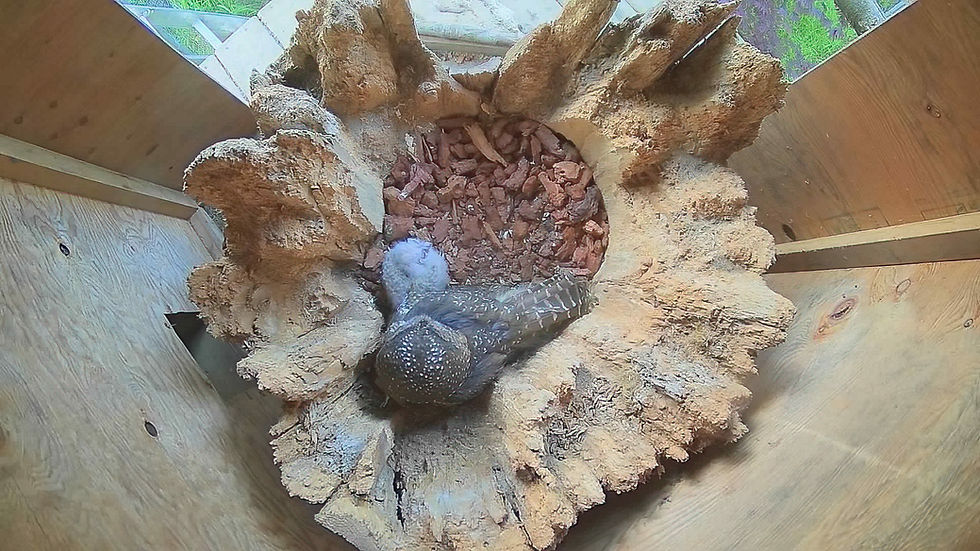Keeping Tabs on Spotted Owls in the Wild
- Oct 10, 2023
- 2 min read
Updated: Oct 19, 2023
The Northern Spotted Owl Breeding Program (NSOBP) has a committed and passionate team based in Langley. Their primary focus is to provide care to the owls on a daily basis at the breeding center. While this team concentrates on the breeding aspect of the NSOBP, a smaller yet equally dedicated team takes charge of the crucial "release" phase of our mission.
This field team spends their days (which are mostly nights!) in the spotted owls’ old-growth forest. They spend countless hours hiking through the forest to track down the released owls as the team back in Langley eagerly anticipates updates on the owls' progress and well-being in their natural habitat.

How do we use telemetry?
Once the selected northern spotted owls from the NSOBP are released, field crews monitor them regularly both remotely and in-person using two types of wildlife radio-telemetry.
Wildlife radio-telemetry is the transmission of information, typically location, from a transmitter on a wild animal to a receiver. There are many ways to attach a transmitter to an individual. The chosen method depends on the species’ physical characteristics (body type, size, and shape) and lifestyle. The location data collected can help biologists understand habitat use, home range size, mortality, survivorship, and movement patterns of the tagged individual and/or species.
Prior to release, northern spotted owls are equipped with both a GPS Argos and VHF (very high frequency) radio tag. The tags are backpack mounted allowing unrestricted range of motion for the wings and maintain the same weight distribution as before the addition.
GPS Argos tags allow location information to be collected remotely. These tags send information to a system of satellites, which then transmit the tag’s location to a receiver on Earth, usually a computer. This data can then be downloaded by the field crew. The interval between transmissions is programmed before deployment of the tag, with a trade-off between frequent transmissions and extending battery life.
For in-person checks field crews use VHF radio tags. VHF radio transmitters emit a pulsing radio signal at a unique specified frequency. An antenna connected to a receiver is used to intercept the signal. The signal strengthens as one hones in on the transmitter, eventually leading to the tagged individual.

Why do we combine efforts?
This combined system of GPS and VHF transmitters allows field crews to focus search efforts, facilitating the relocation of released owls. As with other technologies, there are occasional hiccups such as lags in transmissions and incomplete transmissions (2D point instead of 3D) from the GPS tags. Topography can interfere with receiving VHF transmitter signals. The location of the owls can be very difficult to access on foot at times resulting in lots of hiking and effort. Despite difficulties, visual checks are performed regularly after release to evaluate the owls’ health, behavior, and habitat and give them the best chance of success.
Thank you to the TD Friends of the Environment Foundation for aiding in the purchase of additional wildlife radio-telemetry equipment for the 2023 field season.
This article was originally published in our 2023 Newsletter.








